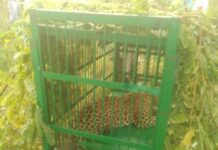Kashmir has been famous for its silk production since ages and can also be traced in Kalhana’s Rajtrangni. With the passage of time, silk production in the state declined considerably over a period of nearly 50 years. According to reports, the cocoon production in Kashmir was 15 lakh kilograms of cocoons in 1940 and now it has been reported as just 3 lakh kilograms in 2012. However, the cocoon rearing activity is again picking up after Government launched different schemes for assisting people in the trade besides encouraging and boosting the production. The number of villages involved in sericulture related activity in Kashmir has gone up from 774 in 2009-10 to 1081 in 2012-13.
Moreover, the numbers of Silk rearers have gone up from 5568 in (2008-09), 6541 in (2009-10), 8031 in (2010-11) and 8339 in (2011-12) according to Sericulture Department (J&K) Government. Not only Silk rearers, but cocoon production has also gone up from 254.20 in (2008-09), 285 in (2009-10), 385 in (2010-11) and 356 in (2011-12). In term of income generation, year 2008-09 witnessed earnings of Rs 140.67 lakh, 2009-10 Rs 252.00 lakh, 2010-11 Rs 308.38 lakh and in 2011-2012 earnings went to Rs 350.00 lakh. Sericulture could become an alternative source of income for landless people in rural areas and can boost rural economy to substantial levels.
In some areas of Pattan block, Women Self Help Group (SHG) members particularly members of Gulab SHG in Check-i-Jamaal Mir village with the support of Indo Global Social Service Society (IGSSS) have also started rearing cocoons. In 2011, Gulab SHG earned a profit of Rs 12, 000 from cocoon rearing activity but failed miserably due to premature loss of Silk Worms. This year, they expect a significant profit from this activity.
















Kashmir Life’s Photojournalist, Bilal Bahadur is currently Media Fellow with Indo-Global Social Service Society’s (IGSSS) Media Fellowship Programme under European Union’s EIDHR project jointly implemented with Welthungerhife in J&K.
The views expressed in this publication do not necessarily reflect views of European Union, Welthungerhilfe and Indo Global Social Service Society.















